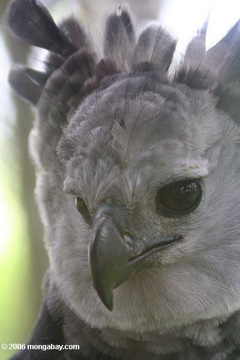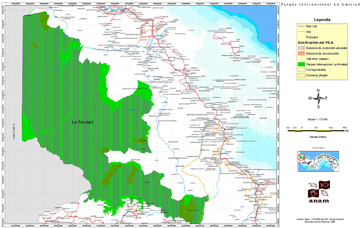Environmentalists demand AES withdraw from Panama dam projects
Groups demand AES withdraw from Panama dam projects
mongabay.com
August 23, 2007
More than 50 green groups demanded Thursday that AES Corporation withdraw from three controversial hydroelectric projects that are threatening La Amistad International Park in Panama. Environmentalists say the dams threaten to displace wildlife and local communities — the Naso and Ngobe people — in the World Heritage site.
La Amistad is home to more than 215 species of mammals, 600 species of birds, 115 species of fish, and 250 species of reptiles and amphibians, including several hundred plant species and 40 bird species that are found nowhere else in the world. It also supports several indigenous tribal communities that live along its border.
“The dams, roads, bridges and power lines slated for construction would devastate unique native species, destroy a dynamic, free-flowing river, and open this remote jungle for development,” said Peter Galvin, conservation director with the Center for Biological Diversity, the group that sent the letter to AES Corp.
 Harpy eagle are found in La Amistad International Park. Photo by Rhett A. Butler |
AES Corporation, based in Arlington, Virginia, has been financing three proposed dam projects on the Changuinola River, located on the border of the park, and its subsidiary in Panama, AES Changuinola, S.A., would operate the three dams. Research by
Studies by show that the proposed dams would have a significant impact on aquatic biodiversity in the area.
“Many of the fish and all shrimp species living in these rivers must migrate between the ocean and freshwater to complete their life cycles; the dams would block their migration and effectively extirpate up to 11 aquatic species from the Biosphere Reserve,” said the Center for Biological Diversity in a statement. “Such a loss would likely have devastating and cascading consequences for indigenous culture and livelihoods and for biodiversity throughout the area.”
The Center for Biological Diversity says it has been working with other environmental groups and indigenous leaders from both the Naso and Ngobe communities to “send a strong message to AES Corporation, its partners, shareholders, and the Panamanian National Environmental Authority.”
In all the groups sent three letters to AES Corporation, including one endorsed by over 50 non-governmental organizations, one explaining a recent violation of indigenous Ngobe rights relating to the dams, and one from the Ngobe imploring the corporation and its shareholders to cancel the dam projects. The Ngobe letter was signed by 144 people, representing many from the villages which would be flooded.
 La Amistad International Park. Click to enlarge |
The Center for Biological Diversity says controversy over the Panama dams has persuaded other financiers to back away from the projects. In 2005, the Inter-American Development Bank pulled its funding of the Bonyic Hydroelectric project following environmental and social concerns raised by the indigenous Naso community and environmental groups.
“We are hoping to demonstrate to AES and its partners that the international community supports local efforts to preserve indigenous livelihoods and the extraordinary biodiversity of the La Amistad Biosphere Reserve,” said Galvin. “We urge AES to follow the Inter-American Development Bank’s example and pull out.”
While AES maintains the dams will help fight global warming by offsetting greenhouse gas emissions, growing evidence shows that tropical dams and their associated reservoirs actually increase methane emissions, a potent heat-trapping gas. In press materials, AES has pledged to be “environmentally responsible.”
“We must act now to protect La Amistad or else risk losing this international treasure,” said Ezekiel Miranda, an environmental leader who lives near the park.
This article is based on news releases from the Center for Biological Diversity and a previous mongabay.com article.